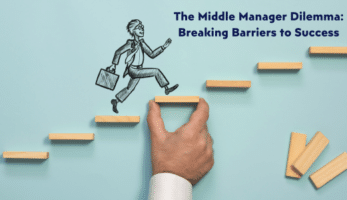Human Resources
Performance Management in Human Resources

The COVID-19 pandemic changed how businesses function, and in the wake of this shift, HR leaders, management and staff are adjusting to the impact of remote work and total changes in performance management. Many of these changes are for the better, and the resulting performance management shift is more effective in channeling employee focus, engagement and value.
In This Article:
- What Is Performance Management?
- What Is the Role of HR in Performance Management?
- The Performance Management Roadmap
- Performance Management Tips for HR Leaders
- Let Exude Human Capital Help You Facilitate Effective Performance Management Today
What Is Performance Management?
Performance management is a form of ongoing communication between management and employees to clarify responsibilities and priorities and provide employees with the tools they need to perform better in their roles consistently. Performance management for leaders involves aligning employee success with your organization’s goals and establishing open and ongoing communication between HR, company managers and staff.
Employees motivated to improve themselves and their performance are an asset to any organization, and employee performance management centers around a strategic and personalized approach to achieving personal and organizational goals. Although the performance management process looks slightly different for each business, it aims to achieve the following objectives:
- Establishing clear expectations: Communicate clearly to employees about what their roles are, as well as broader organizational policies and best practices.
- Setting goals: Leadership works with employees one-on-one to set personal goals that align with their team and organization’s needs and vision.
- Providing feedback: Leadership meets for open conversations with employees regularly to assess their progress toward goals and provide support and motivation.
- Reviewing results: The frequent informal check-ins throughout the year often lead to an annual performance review, where managers and leadership can objectively assess employees’ progress and achievements.
What Is the Role of HR in Performance Management?

At first glance, performance management is a working relationship between employees and management. While performance management is an organization-wide strategy, human resources and performance management are linked in many ways, and HR leaders play a significant role in ensuring performance management processes run smoothly and achieve results. HR can elevate these initiatives by filling the following functions:
- Creating performance management systems: Performance management is a systematic process, and HR is proactive in creating performance management procedures and implementing and maintaining the accompanying systems. In addition, HR must also ensure employees and management know how to use the system to achieve their goals.
- Providing support: HR personnel can be invaluable in helping management, and employees have constructive and positive conversations about employee performance and progress.
- Defining operational efficiency metrics: Performance management forms part of a larger strategy to attract and retain the best talent. Therefore, HR can execute performance management strategies, identify talent gaps and provide standard metrics to align each department.
- Promoting organization culture and values: Behaviors that align with an organization’s values are a cornerstone of organizational success. HR can encourage and facilitate management assessing employees on the values and behaviors that create your culture.
In short, HR acts as a facilitator in performance management, providing the people on the ground with the tools they need to benefit from its processes. Enabling successful performance management is a critical HR function, ensuring its value to employees, management and the organization itself.
The Performance Management Roadmap
Employee performance management cycles are critical to keeping management and employees engaged and focused on their goals. The four typical stages of performance management include the following:
1. Establish Performance Expectations
In this first stage of the performance management cycle, roles and their accompanying expectations should be clearly outlined, even in job descriptions. This clarity helps attract the best candidates for the position. Once you’ve identified and hired a successful candidate, you must reiterate these expectations in the onboarding phase.
Set SMART goals and performance metrics around meeting — or exceeding — these expectations. SMART goals are specific, easy to measure and achieve, relevant to the employee and their goals and bound to a specific timeframe. Allowing employees to participate actively increases motivation, engagement and satisfaction. You’ll also discuss training and development goals for the cycle, establish employee skills and identify opportunities for improvement.
2. Monitor Progress
We now know there are more successful methods for getting the most from employees than a single annual review. In the monitoring phase, management checks in with employees regularly and measure it against their personal SMART goals. Discussions are open, and each party provides ideas to improve. Management must give employees regular feedback for this approach to succeed, as these check-ins reveal challenges early, so you can handle them before they intensify.
Scheduling monthly meetings is the backbone of the monitoring phase. Although you have established long-term goals with employees, breaking these objectives into more digestible pieces and discussing them at least once a quarter is essential to keep employees motivated and improving.
3. Review and Develop
Throughout the monitoring phase, management and HR learn much about each employee. In the review and development phase, you can assess their metrics and gauge how much they have developed throughout the cycle. With this information, you can decide how to develop each employee further. You can suggest refresher courses, additional training and other career development opportunities for weaker areas.
4. Rate and Reward
The final phase in the cycle involves rating employees to quantify their performance and determine the value they add to your organization. If they continue to perform below average, you can move them to a role more suited to their strengths or dismiss them.
Just as you handle underperforming decisively, you must manage superior performances similarly through a raise, promotion or praise and recognition. Rewards show employees that you value their dedication and hard work. In addition, lack of recognition demotivates employees and reduces productivity.
At the end of each cycle, HR, management, and employees must come together again and start the process, establishing new goals and expectations.
Performance Management Tips for HR Leaders
Although many daily interactions involve employees and management, HR leaders and managers must take an active role in this ongoing process for it to be effective. The following tips and best practices can help you navigate a modern performance management system:
- Evaluate your current processes: Changing your performance management processes requires a clear strategy and direction. Assess where your organization is now and identify what works and doesn’t in your current systems. Ask managers and employees for input and improvement suggestions.
- Select an approach: There are two popular approaches to performance management — behavioral and results-oriented. As the name suggests, the behavioral approach evaluates behavior and effort. The results-oriented approach considers employees on objective criteria and prioritizes results over processes.
- Train managers: Your performance management program relies on managers in many ways. Ensure you have the proper training to help management engage, motivate and develop their teams and maintain open communications.
- Set SMART goals: HR should be involved in setting employee development goals, so you can assist in creating personalized plans and key performance indicators for employees and spot opportunities for improvement.
- Use a structured system: Ongoing performance management has significant benefits. However, you should have a formal review system for rewards like raises and promotions. A single set of standards for everyone in a specific position or department gives employees a clear objective to work towards and sends the message that you recognize and reward superior performance.
- Build a values-based culture: Your organization should always have a clear set of values employees can access. Shared values create a cohesive team committed to the company’s objectives and professional development.
- Provide management and employees with the tools they need: People find it easier to improve their performance in an environment that supports their ongoing growth with the necessary resources such as performance management consulting, technology and literature.
Open communication is the key to an effective performance management system, and as an HR leader, you can facilitate and encourage this collaboration.
Let Exude Human Capital Help You Facilitate Effective Performance Management Today
Successful performance management is critical for happy, engaged and productive employees. Exude performance management consulting can help you design systems that fit your organization and align your outcomes and expectations. We don’t believe in a one-size-fits-all approach to consulting — our team of experts can help you transform your performance management through innovation.
Contact us today to learn more about how Exude can help you get the most from your employees and create a collaborative team working toward the same goal.








